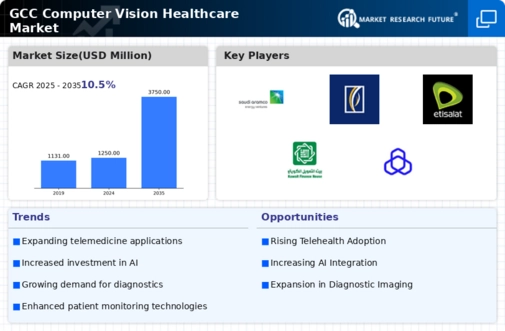The GCC Computer Vision Healthcare Market is an evolving sector characterized by the increasing integration of advanced technologies and artificial intelligence into healthcare systems. This market has gained momentum due to its potential to enhance diagnostic accuracy, streamline operations, and improve patient outcomes. Companies operating within this landscape are leveraging image analysis algorithms, data analytics, and machine learning to meet the growing demand for innovative healthcare solutions. As competition intensifies, firms are focusing on strategic partnerships, technological advancements, and tailored product offerings to establish themselves as leaders in the market.
The strategic landscape is marked by varying degrees of expertise, with competitors striving to differentiate their offerings through specialized services and cutting-edge technology integration.In this environment, ImageKit has positioned itself as a formidable player in the GCC Computer Vision Healthcare Market. Known for its robust imaging solutions, ImageKit emphasizes high-quality image processing and optimization tailored specifically for healthcare applications.
The company’s strengths lie in its ability to deliver real-time image enhancement and diagnostic support, making it an attractive choice for healthcare providers seeking to improve imaging capabilities and clinical productivity. ImageKit’s commitment to user experience and efficiency enables clinicians to make informed decisions swiftly, which is essential in critical healthcare settings. Its market presence is built on strong partnerships and collaborations with regional healthcare institutions that value precision and reliability in patient diagnostics.
This localized focus allows ImageKit to cater to the specific needs of the GCC healthcare system, enhancing its reputation and competitiveness in the market.IBM has established itself as a significant force in the GCC Computer Vision Healthcare Market through its comprehensive suite of AI-driven healthcare solutions and enterprise-level capabilities. With a focus on data management and advanced analytics, IBM offers key products that enable healthcare providers to leverage computer vision for diagnostics and treatment planning. The company's strengths lie in its extensive research and development efforts, leading to innovations that integrate machine learning and computer vision technologies into healthcare workflows.
Furthermore, IBM's established presence in the GCC market is reinforced by strategic mergers and acquisitions that enhance its technological capabilities and market reach. By aligning with local healthcare entities, IBM effectively caters to the distinct challenges faced in the region, fostering trust and collaboration. This proactive approach enables IBM to bolster its competitive positioning and address the evolving needs within the GCC healthcare landscape.
















Leave a Comment